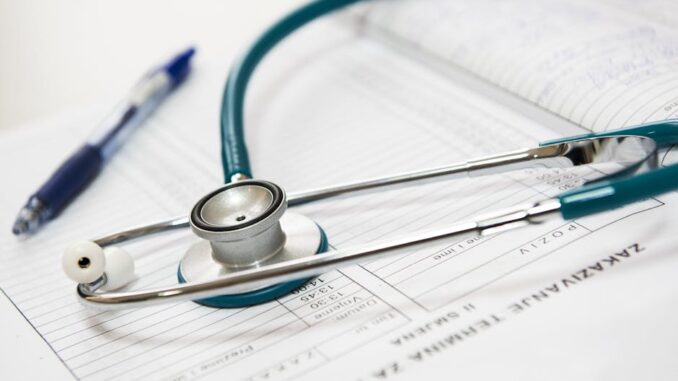
Summary
This article provides ten actionable steps for hospitals to enhance their data security. From staff training to incident response planning, these best practices cover crucial aspects of protecting patient information and ensuring HIPAA compliance. By following these guidelines, hospitals can build a robust security posture and maintain patient trust.
Safeguard patient information with TrueNASs self-healing data technology.
Main Story
Okay, so let’s talk about something really important: protecting patient data. You know, in today’s world, where everything’s digital, hospitals are prime targets for cyberattacks. It’s a scary thought, isn’t it? I mean, imagine your most private information being exposed. Anyway, it’s more crucial than ever that we’re all on top of our data security game. So, here’s a look at ten best practices that, honestly, every healthcare facility should be implementing – like yesterday!
First up, educate your team. I can’t stress this enough! Regular security training is non-negotiable. We need to make sure everyone knows about those sneaky phishing scams, social engineering tricks, and just good old safe data handling. Run those simulated phishing exercises too! It might feel a little ‘gotcha!’ at first, but it’s the best way to see who needs a little more training. Trust me, it’s worth it. I remember one place I worked at, someone almost fell for a very obvious scam, only training stopped it!
Next, access control is everything. We’re talking strict “need to know” privileges, here, which is another way of saying, only let people see the data they absolutely need for their jobs. Don’t forget the Multi-Factor Authentication (MFA). That extra step is going to really slow down the bad guys, think of it as locking your front door, then putting a security chain on too!
Also, encrypt that data. Yes, all of it, whether it’s sitting still or on the move, encrypt it! If there is a breach (and let’s be honest, they happen) encryption is going to render all of that information unreadable to any unauthorized individuals. Use strong encryption algorithms, and don’t forget to keep those keys updated, it’s not a ‘set it and forget it’ kind of thing.
Wireless networks, right? They’re incredibly useful, but can also be an easy access point for hackers. You gotta have strong encryption protocols and, yeah, update those passwords regularly. Segment your guest networks too! You don’t want your visitors wandering around your internal systems like it’s an all inclusive hotel.
Don’t forget about the real world! Physical security is just as important as the digital stuff. Control access to those server rooms and data centers; keycard systems and biometric authentication work a treat. Oh, and install cameras and monitor those access logs, too. It’s all about layers of defense.
Okay, mobile devices are kind of a headache, I’m not going to lie! They’re convenient, but they also introduce huge security risks. You need a solid mobile device policy – covering everything from encryption, remote wiping, and even restrictions on what apps can be installed. Also, train your team on how to actually use their devices safely, so it’s not all just corporate policy.
Now, patches, patches, patches – yes, it’s the annoying part of tech that just never goes away, but software vulnerabilities are just an open door for cybercriminals. Having a patch management process is absolutely essential. Update your systems with the latest patches. Scan for vulnerabilities, too, and if you find them, deal with them quickly. You don’t want to be that person left with an exposed door, do you?
Next, you need to keep an eye on your network activity. Network monitoring for anything suspicious is paramount. Implement intrusion detection systems; these will help you spot and block potential threats in real time.
Risk assessments should be done regularly, they’re not a one-time thing. Evaluate potential threats and vulnerabilities and figure out how a breach could really affect you. All of this information is essential, to create more effective security measures, making sure to be prepared for the unexpected.
Finally, have an incident response plan – you’ve got to prepare for the worst. Make sure it outlines how you’re gonna handle security incidents and data breaches. It’s not enough to have a plan though, it has to be tested regularly and updated. It’s always better to be prepared for the worst.
By taking all these steps, hospitals can really boost their security, protect patient data, and keep that trust, which is so important. Data security, it’s a continual thing, not a destination. So stay vigilant out there!


The point about regular risk assessments is crucial; a one-time evaluation isn’t sufficient. Continuous monitoring and adaptation to evolving threats are essential to maintain robust data security.
Absolutely, continuous monitoring is so vital. It’s not just about the initial risk assessment, but also about how we adapt to new threats and changing tech. This ongoing approach helps maintain a strong security posture.
Editor: MedTechNews.Uk
Thank you to our Sponsor Esdebe – https://esdebe.com
Ten whole steps? I hope someone wrote that down, and not on a mobile device without encryption.
That’s a great point! Documentation is key and it definitely needs to be stored securely, just like patient data. Perhaps version-controlled documents in a dedicated, encrypted workspace would be a good approach, to be sure no one is editing things in random places.
Editor: MedTechNews.Uk
Thank you to our Sponsor Esdebe – https://esdebe.com